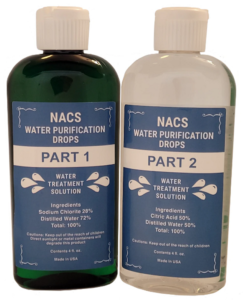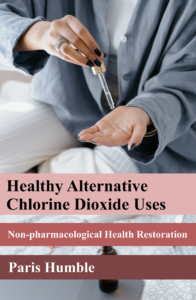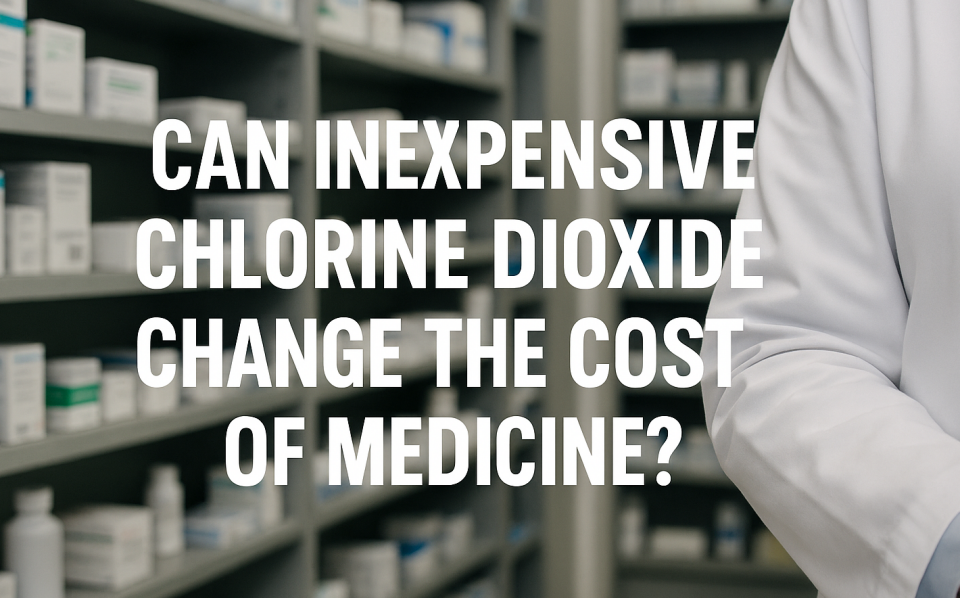Modern medicine has made huge progress, but it often comes with two big problems: side effects and sky-high costs. Many people can’t afford life-saving treatments. Even in wealthy countries, patients and families go into debt to pay for drugs, hospital stays, and surgeries. This is why chlorine dioxide (ClO₂) is getting sustained attention.
Chlorine Dioxide is a simple, low-cost substance that has been used for decades to purify water and kill germs. But researchers and practitioners believe it may also work inside the body in three ways:
- Clearing out unhealthy or damaged cells.
- Helping tissue heal and regrow.
- Balancing the immune system.
If these abilities are confirmed by more studies, chlorine dioxide could change the way we treat cancer, autoimmune diseases, wounds, and more. And it might do so at a fraction of the cost of today’s medicine.
A Side-by-Side Look: Treatments vs. Chlorine Dioxide
The table below shows how current treatments compare with chlorine dioxide’s potential.
| Health Problem | Current Standard Treatment | Limits of Current Treatment | How Chlorine Dioxide Might Help |
| Cancer | Chemotherapy, radiation, surgery | Harsh side effects (hair loss, nausea, fatigue). Cancer cells often become drug-resistant. | Non-selective killing of cancer cells (doesn’t matter how they mutate). It may turn cancer into a manageable condition instead of a deadly one. |
| Hair Loss | Minoxidil (Rogaine), Finasteride (Propecia), hair transplants | Limited success, side effects (sexual dysfunction, scalp irritation), and very costly. | Clears out replacement cells that crowd hair follicles, making room for new hair growth. Could restore follicles naturally. |
| Wound Healing | Cleaning with peroxide or iodine, antibiotic ointments, and bandages | May sting, can damage healthy tissue, and sometimes slow healing. | Protects against germs, clears away scabs, reduces inflammation, and encourages faster tissue regrowth. |
| Burn Recovery | Burn creams (silver sulfadiazine), skin grafts | Helps fight infection but does little to improve the smooth regrowth of skin. | Both prevent infection and support healthy tissue regrowth, possibly reducing scarring. |
| Arthritis | Anti-inflammatory drugs (NSAIDs), steroids, and immunosuppressing injections | Long-term side effects (stomach damage, bone thinning, lowered immunity). Expensive. | When injected into joints, it may calm inflammation, reduce pain, and improve mobility without major side effects. |
| Skin Conditions (Psoriasis, eczema, vitiligo, alopecia areata) | Steroid creams, immune-modifying drugs | Temporary relief only. Long-term steroid use can thin the skin. Expensive biologic drugs weaken immunity. | Topical chlorine dioxide may calm inflammation, keep skin clean of microbes, and in some cases, restore normal appearance. |
| Autoimmune Diseases | Steroids, biologics (like Humira, Enbrel) | High cost, many side effects, does not cure the disease. | May balance the immune system naturally, calming “overactive” attacks while still allowing normal defenses. |
This shows that chlorine dioxide could do the same jobs—or more—with fewer side effects in many cases.

What About the Costs?
Another major challenge in healthcare is cost. Some treatments cost hundreds of dollars per month, while others cost thousands per dose. Biologic drugs for autoimmune diseases can run $50,000 or more per year.
Because chlorine dioxide is easy and inexpensive to make, it could make many advanced treatments affordable worldwide.
| Condition | Typical Current Treatment | Estimated Cost / Accessibility | Chlorine Dioxide Potential |
| Cancer | Chemotherapy, radiation, targeted drugs | Tens of thousands of dollars per year. Requires hospitals, specialists, and high-tech equipment. Often unaffordable in poorer countries. | Simple, low-cost solution. It could be prepared locally and injected directly into tumors with minimal equipment. |
| Hair Loss | Rogaine, Propecia, hair transplants | $30–$100/month for drugs; $5,000–$15,000 for surgery. Only available in clinics. | Very low cost. It could be used topically to clear out blocked follicles and restore growth. |
| Wound Healing | Antibiotics, peroxide, iodine, and advanced wound dressings | Ointments and dressings are widely available, but advanced treatments (like negative-pressure therapy) are costly. | This product is inexpensive and easy to apply in clinics or at home. Could improve outcomes in resource-limited settings. |
| Burn Recovery | Burn creams, skin grafts, and hospitalization. | Hospitalization and grafts can cost tens of thousands of dollars. Requires specialized burn units. | Low-cost topical use could both prevent infection and support tissue regrowth, especially in areas without advanced burn centers. |
| Arthritis | NSAIDs, steroids, biologic injections | NSAIDs are cheap but have long-term risks. Biologics cost $20,000+ per year. | It could be prepared affordably and injected into joints. May reduce inflammation and pain at a fraction of the cost. |
| Autoimmune Diseases | Biologics (Humira, Enbrel, etc.), steroids | Biologics often $2,000–$5,000/month. Steroids are cheaper but harmful in the long term. | Chlorine dioxide could be produced locally at very low cost, making treatment more accessible worldwide. |
How Chlorine Dioxide Can Affect the Future
If chlorine dioxide really can clear bad cells, promote healing, and balance the immune system, then:
- Cancer may become manageable instead of life-threatening.
- Wounds and burns could heal faster and cleaner.
- Autoimmune diseases might finally have a safe, affordable treatment.
- Millions of people in poor or rural areas could access care that is now out of reach.

3 Core Actions of Chlorine Dioxide Review
| Action | What It Means | Why It Matters for Health | Examples |
| 1. Clear | Removes unhealthy or damaged cells, germs, and debris. | Makes room for the body to rebuild with healthy tissue. | Clearing cancer cells, removing cells that block hair follicles, and cleaning wounds. |
| 2. Regrow | Supports tissue healing and regeneration. | Helps the body replace what was lost with stronger, healthier cells. | Healing burns, closing wounds, and encouraging skin repair. |
| 3. Balance | Helps calm an overactive immune system or wake up a weak one. | Prevents autoimmune attacks and may boost anti-cancer responses. | Soothing psoriasis, arthritis, or eczema; strengthening the immune system’s fight against tumors. |
This doesn’t mean chlorine dioxide is a proven cure—it still needs careful research and clinical trials. But it does mean there’s real potential for a low-cost, powerful tool in medicine.
History shows us that simple discoveries can transform healthcare. Penicillin came from mold. Aspirin came from tree bark. Could chlorine dioxide, a “Humble” disinfectant, be next?

Leave a Reply